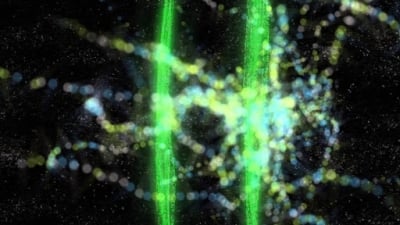
Ep 4. How to Travel Through Time
- TV-G
- December 29, 2009
- 21 min
-
7.4 (14)
In the fourth episode of Sci Fi Science season 1, titled "How to Travel Through Time," host Michio Kaku explores the concept of time travel and the theories behind it. He begins by examining the possibility of time dilation, which is the idea that time passes at different rates depending on the speed at which an object is moving. Kaku explains that the faster an object moves, the slower time passes for that object relative to a stationary observer, a concept that has been proven through experiments with atomic particles.
Next, Kaku delves into the theory of wormholes, which are hypothetical passages through space-time that would allow for instantaneous travel between two points in the universe. He explains how the existence of wormholes is supported by Einstein's theory of general relativity, which describes gravity as the curvature of space-time. Kaku also explores the possibility of creating artificial wormholes, which would require manipulating the fabric of space-time using exotic forms of matter.
Kaku then discusses the concept of "closed time-like curves," which are paths through space-time that loop back on themselves, allowing for travel through time. He explains that closed time-like curves are theoretically possible, but they would require the existence of cosmic strings, which are hypothetical one-dimensional objects that are thought to exist in the early universe.
Throughout the episode, Kaku uses analogies and visual aids to help viewers understand these complex concepts. He uses a rubber sheet to demonstrate how gravity warps space-time, and he compares time dilation to a car race in which the slower car experiences time at a different rate than the faster car.
In addition to explaining the theories behind time travel, Kaku also explores the practical implications of time travel, such as the possibility of changing the past and the potential dangers of creating paradoxes. He discusses the "butterfly effect," which is the idea that small changes in the past could have huge effects on the present. He also explains that traveling back in time could create a causal loop, in which events in the past cause themselves, creating a paradox.
Overall, "How to Travel Through Time" is an engaging and informative exploration of one of science fiction's most exciting and intriguing concepts. Kaku's enthusiasm and expertise make the complex theories accessible to viewers, while his discussion of the practical implications of time travel adds an extra layer of interest to the episode.
